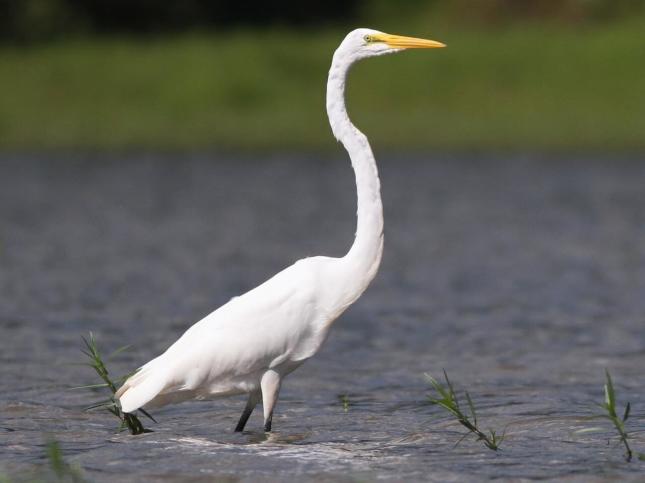
Great Egret: Fun Facts
- The elegant Great Egret is a dazzling sight in many a North American wetland. Slightly smaller and more svelte than a Great Blue Heron, these are still large birds with impressive wingspans. They hunt in classic heron fashion, standing immobile or wading through wetlands to capture fish with a deadly jab of their yellow bill. Great Egrets were hunted nearly to extinction for their plumes in the late nineteenth century, sparking conservation movements and some of the first laws to protect birds.
- The Great Egret eats mainly small fish but also eats amphibians, reptiles, birds, small mammals and invertebrates such as crayfish, prawns, shrimp, polychaete worms, isopods, dragonflies and damselflies, whirligig beetles, giant water bugs, and grasshoppers. It hunts in belly-deep or shallower water in marine, brackish, and freshwater wetlands, alone or in groups. It wades as it searches for prey, or simply stands still to wait for prey to approach.
- The Great Egret walks with its neck extended and its wings held close to its body. In flight, it is graceful and buoyant, with its neck tucked back against its shoulders and its legs trailing behind. Great Egrets form monogamous pairs each breeding season, though it’s not known whether the pair bond lasts through multiple years.
- Early in the breeding season adults grow long plumes on their backs, which they raise in courtship displays. Males perform most of the displays, which can involve preening the wings, ducking the head, holding and shaking twigs in the bill, and stretching the neck. Nestlings compete fiercely with each other, and dominant chicks sometimes end up stabbing the youngest siblings to death. The chicks also threaten and attack intruders.
- The Great Egret is the symbol of the National Audubon Society, one of the oldest environmental organizations in North America. Audubon was founded to protect birds from being killed for their feathers.

